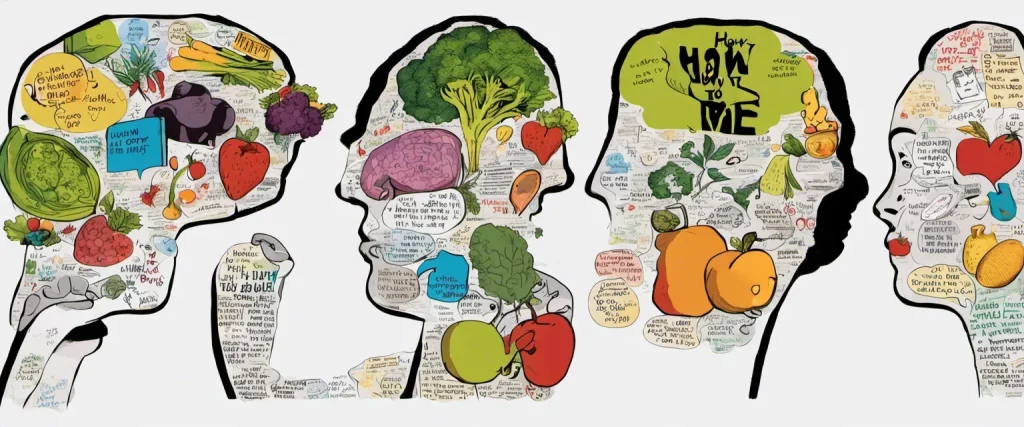In “How Not to Die,” Michael Greger, a physician and renowned advocate for plant-based nutrition, unveils groundbreaking research and presents an empowering guide to achieving optimal health and longevity. With a profound dedication to evidence-based medicine, Dr. Greger sheds light on the leading causes of premature death and debunks common misconceptions about nutrition. Through his engaging narrative and vast expertise, he offers practical strategies and a wealth of knowledge to help readers make informed choices that can revolutionize their well-being.
Chapter 1: Introduction to Preventive Medicine
Chapter 1 of “How Not to Die” by Michael Greger provides an introduction to the field of preventive medicine and emphasizes the importance of taking proactive steps to maintain good health and prevent chronic diseases. Greger highlights the staggering prevalence and impact of chronic diseases such as heart disease, diabetes, and certain cancers, which are the leading causes of death worldwide.
The author emphasizes that these diseases are largely preventable through simple lifestyle changes. He argues that a plant-based diet, incorporating a wide variety of fruits, vegetables, whole grains, and legumes, can significantly lower the risk of chronic diseases. Greger provides numerous examples and studies to support his claim, such as the positive effects of consuming cruciferous vegetables in preventing various types of cancer.
Furthermore, Greger stresses the significance of exercise, suggesting that regular physical activity can reduce the risk of chronic diseases by up to 50%. He explains the science behind exercise’s impact on our bodies, including the positive effects on weight control, blood pressure, and insulin sensitivity.
In this chapter, Greger emphasizes the power of preventive medicine and urges readers to take control of their health by incorporating plant-based diets and regular exercise into their lives. He asserts that these simple lifestyle changes can have a profound impact on reducing the risk of chronic diseases and living a longer, healthier life.
Chapter 2: How Not to Die from Heart Disease
Chapter 2 of “How Not to Die” by Michael Greger focuses on the leading cause of death worldwide: heart disease. The chapter discusses the importance of recognizing the underlying factors that contribute to heart disease and adopting a preventative approach to avoid becoming a victim of this deadly condition.
Greger delves into the primary risk factors for heart disease, such as high blood pressure, high cholesterol levels, diabetes, and smoking. He emphasizes that diet plays a pivotal role in the development and prevention of heart disease. In particular, he highlights the detrimental effects of consuming foods high in saturated fats, trans fats, and cholesterol, which can promote plaque formation in blood vessels and lead to heart attacks.
Moreover, Greger showcases studies that correlate the consumption of animal products, such as meat and dairy, with an increased risk of heart disease. He explains how plant-based diets can significantly reduce the risk of developing heart disease, referring to various scientific research and population studies. Greger highlights the benefits of whole plant foods, particularly fruits, vegetables, legumes, and whole grains, which are rich in fiber, antioxidants, and phytochemicals that promote heart health.
Additionally, the chapter highlights the beneficial effects of specific plant-based foods, such as nuts, flaxseeds, and green tea, which have been shown to lower cholesterol and improve heart function. Greger also discusses the importance of exercise as a preventive measure against heart disease, emphasizing the need for regular physical activity to maintain cardiovascular health.
In essence, Chapter 2 of “How Not to Die” underscores the significance of adopting a plant-based diet, avoiding harmful substances like tobacco and excessive alcohol consumption, and engaging in regular exercise to prevent heart disease and promote overall well-being. Through making these lifestyle choices, individuals can significantly reduce their risk of becoming another statistic in the face of this deadly disease.
Chapter 3: How Not to Die from Lung Diseases
Chapter 3 of “How Not to Die” by Michael Greger discusses various lung diseases and provides evidence-based recommendations on preventing and treating these conditions.
The chapter begins with an exploration of chronic obstructive pulmonary disease (COPD), a progressive lung disease often caused by smoking. It highlights how quitting smoking can tremendously reduce the risk of COPD and improve lung function. Greger also emphasizes the importance of consuming foods rich in antioxidant and anti-inflammatory compounds, such as fruits, vegetables, and whole grains, which have been found to lower the risk of developing COPD.
Moving on, the chapter delves into the topic of lung cancer, emphasizing that it is one of the most lethal forms of cancer. Greger reveals that cigarette smoking is the leading cause of lung cancer, responsible for over 80% of cases. Encouragingly, he presents research suggesting that consuming cruciferous vegetables (such as broccoli, kale, and cauliflower) can significantly lower the risk of developing lung cancer, thanks to their high levels of anti-cancer compounds.
Furthermore, the chapter explores other lung diseases such as asthma, pulmonary hypertension, interstitial lung disease, and tuberculosis. Greger highlights that a balanced plant-based diet, along with regular exercise, can reduce the risk of these conditions and improve lung health overall.
In conclusion, Chapter 3 highlights the powerful influence of diet and lifestyle on lung health. By quitting smoking, adopting a plant-based diet rich in fruits, vegetables, and whole grains, and incorporating regular physical activity, individuals can reduce their risk of developing lung diseases and improve their overall respiratory well-being.
Chapter 4: How Not to Die from Brain Diseases

Chapter 4 of “How Not to Die” by Michael Greger is titled “How Not to Die from Brain Diseases.” In this chapter, Greger explores the various neurological conditions that afflict many individuals in today’s society, such as Alzheimer’s disease and Parkinson’s disease. He highlights the significant impact these diseases have on individuals and their families, as well as the limitations of current medical treatments.
Greger emphasizes that brain diseases are not an inevitable consequence of aging. He presents scientific evidence that provides hope for prevention and even potential reversal of these conditions. The chapter focuses on the role of a healthy diet and lifestyle in preserving brain health.
Greger highlights the protective qualities of certain foods, such as berries, turmeric, and green leafy vegetables, which are rich in antioxidants and anti-inflammatory compounds. He stresses the importance of incorporating these foods into one’s daily diet to reduce the risk of brain diseases.
The author also discusses the detrimental effects of excessive sugar and unhealthy fats on the brain. He advises against the consumption of processed foods and advocates for a plant-based diet to optimize brain health and prevent cognitive decline.
Furthermore, Greger explores the benefits of regular exercise on brain function. He presents research demonstrating that physical activity promotes the growth of new brain cells and enhances memory and cognitive abilities.
Overall, Chapter 4 of “How Not to Die” educates readers on the various brain diseases that plague society and provides evidence-based strategies to prevent and combat these conditions. Greger emphasizes the power of a plant-based diet, antioxidant-rich foods, and regular exercise in protecting and preserving brain health throughout life.
Chapter 5: How Not to Die from Digestive Cancers
In Chapter 5 of “How Not to Die” by Michael Greger, the focus is on digestive cancers, including esophageal, stomach, liver, pancreatic, and colorectal cancers. The chapter highlights the significance of adopting a healthy lifestyle to prevent and treat these types of cancer.
Greger emphasizes the devastating impact of esophageal cancer, often caused by chronic heartburn or gastroesophageal reflux disease (GERD). He suggests dietary changes such as avoiding fatty and processed foods, while increasing intake of fruits and vegetables, to reduce the risk of GERD and subsequently esophageal cancer. Additionally, he recommends raising the head of the bed while sleeping to alleviate the symptoms of reflux.
Moving on to stomach cancer, Greger points out the connection with the bacteria Helicobacter pylori (H. pylori). This harmful bacterium can be a major contributor to gastritis and stomach cancer, but it can be treated with antibiotics. Greger advises individuals to get tested for H. pylori infection and seek appropriate treatment if necessary.
The relationship between lifestyle choices and liver cancer is also examined. Alcohol consumption is identified as a leading cause of liver cancer, and Greger stresses the importance of reducing or abandoning alcohol use altogether. Consuming coffee and avoiding processed foods and animal products are also recommended to support liver health.
Regarding pancreatic cancer, smoking is identified as the primary risk factor. Quitting smoking is deemed essential, and modifying one’s diet by adding more cruciferous vegetables, such as broccoli and Brussels sprouts, can be beneficial.
Finally, colorectal cancer is discussed in terms of the impact of a fiber-rich diet. Greger emphasizes the importance of consuming sufficient amounts of fiber from plant-based sources, as well as the benefits of avoiding processed meats.
In Chapter 5, Greger provides evidence and recommendations on how lifestyle modifications, including dietary choices, can play a crucial role in preventing digestive cancers and improving overall health.
Chapter 6: How Not to Die from Infections
Chapter 6 of “How Not to Die” by Michael Greger focuses on the prevention and treatment of infections. Dr. Greger emphasizes that infections are a leading cause of death and disability worldwide, and he highlights how adopting a plant-based diet and a few preventative measures can significantly reduce the risk of contracting and succumbing to various infections.
The chapter begins by discussing the importance of handwashing and proper hygiene practices. Hand hygiene alone could prevent millions of cases of respiratory and gastrointestinal infections each year. Dr. Greger advises readers to wash their hands thoroughly and frequently, especially before preparing and consuming food.
The author then highlights the role of diet in bolstering the immune system and protecting against infections. A plant-based diet, filled with fruits, vegetables, legumes, whole grains, and nuts, provides essential vitamins, minerals, and antioxidants that enhance the body’s immune response. Such a diet also ensures the consumption of fiber and prebiotics that promote the growth of beneficial gut bacteria, which have been found to protect against infections and boost overall health.
Next, Dr. Greger dives into the power of specific foods in preventing infections. He explores various studies that highlight the antiviral, antibacterial, and antifungal properties of different natural foods, including garlic, ginger, turmeric, and green tea. Incorporating these foods into one’s diet can potentially help fight against common infections.
Furthermore, the chapter emphasizes the significance of vaccination for preventing infectious diseases. Vaccines have been proven to be highly effective in reducing the risk of illnesses such as influenza, pneumonia, and hepatitis. Dr. Greger urges readers to stay up-to-date with recommended immunizations for both themselves and their children.
In conclusion, Chapter 6 of “How Not to Die” emphasizes that preventing and treating infections is possible through simple yet powerful lifestyle and dietary choices. By practicing proper hygiene, adopting a plant-based diet, consuming immune-boosting foods, and staying updated with vaccinations, individuals can significantly reduce their risk of succumbing to infections and enjoy better overall health.
Chapter 7: How Not to Die from Diabetes
Chapter 7: How Not to Die from Diabetes of the book “How Not to Die” by Michael Greger focuses on the prevention, treatment, and reversal of diabetes. This chronic disease affects millions of people worldwide and is a leading cause of death. However, with the right lifestyle changes, diabetes can be managed effectively, and its complications can be minimized or even eliminated.
The chapter begins by highlighting the escalating rates of diabetes and its associated health problems, such as heart disease, blindness, and kidney failure. It emphasizes that the majority of diabetes cases are type 2, which is linked to lifestyle factors like diet and exercise.
Greger explains how a plant-based, whole-food diet can help prevent and manage diabetes. He discusses several studies that demonstrate the benefits of such a diet in reducing the risk and even reversing the disease. He emphasizes the importance of consuming whole grains, legumes, fruits, and vegetables, which are packed with vital nutrients and fiber. These foods help regulate blood sugar levels, improve insulin sensitivity, and lower cholesterol.
The chapter also touches upon the detrimental effects of certain foods, such as animal products, processed meats, refined grains, and sugary beverages, which increase the risk of developing diabetes. Greger advocates for a shift towards healthier food choices to mitigate this risk.
Exercise is another critical aspect discussed in this chapter. Regular physical activity is shown to reduce the likelihood of developing diabetes and improve insulin sensitivity. Greger provides practical recommendations on how to incorporate exercise into daily routines, emphasizing that consistency is more important than intensity.
Lastly, the chapter offers insights into the role stress management and adequate sleep play in diabetes prevention and management. Stress reduction techniques, such as meditation and yoga, are recommended, along with sufficient restful sleep to support overall health and glucose regulation.
In summary, Chapter 7 presents evidence-based strategies and lifestyle modifications that can prevent, treat, and potentially reverse diabetes. By adopting a whole-food, plant-based diet, engaging in regular exercise, managing stress, and prioritizing sufficient sleep, individuals can take control of their health and significantly reduce the risk of suffering from the complications associated with diabetes.

Chapter 8: How Not to Die from Kidney Disease, Breast Cancer, and Beyond
Chapter 8 of “How Not to Die” by Michael Greger focuses on the prevention and management of kidney disease and breast cancer. The chapter emphasizes the importance of a plant-based diet in reducing the risk of these conditions and improving overall health.
In terms of kidney disease, Greger explains that maintaining healthy blood pressure is crucial to prevent kidney damage. He emphasizes the significance of reducing sodium intake by consuming a whole food, plant-based diet. By avoiding processed foods and focusing on fresh fruits, vegetables, and whole grains, individuals can lower their blood pressure and protect their kidneys.
Next, Greger discusses breast cancer prevention. He presents research that suggests a strong link between diet and breast cancer development, with animal products and saturated fat consumption being significant risk factors. On the other hand, he highlights the protective effects of eating a plant-based diet rich in fruits, vegetables, and whole grains, which are high in cancer-fighting compounds such as antioxidants and phytochemicals.
The chapter also addresses the role of exercise in preventing both kidney disease and breast cancer. Regular physical activity has been linked to improved kidney function and decreased cancer risk. Greger recommends incorporating at least 30 minutes of moderate exercise into daily routines to reap these benefits.
Furthermore, Greger stresses the negative impacts of alcohol consumption on kidney function and breast cancer risk. He advises readers to limit alcohol intake or avoid it altogether to protect their health.
In summary, Chapter 8 emphasizes the importance of adopting a plant-based diet that is low in sodium and saturated fats to prevent and manage kidney disease and breast cancer. Incorporating regular exercise and minimizing alcohol consumption further enhance these prevention efforts. By making these lifestyle changes, individuals can significantly reduce their risk of developing these diseases and improve their overall well-being.
After Reading
In conclusion, How Not to Die by Michael Greger is a comprehensive and insightful guide that highlights the importance of nutrition in preventing and treating chronic diseases. Through extensive research and evidence-based information, Greger emphasizes the power of a plant-based diet in improving overall health and longevity. The book not only provides valuable dietary recommendations but also empowers readers to take control of their well-being by making informed choices about their food. With its engaging writing style and practical tips, How Not to Die serves as a valuable resource for anyone looking to prioritize their health and make positive changes in their diet and lifestyle.
1. “Why We Sleep” by Matthew Walker: This book delves into the science behind sleep, emphasizing its importance for our overall well-being. With compelling evidence, Walker explores the impact of inadequate sleep on our physical and mental health, while also suggesting practical tips for improving sleep quality. A must-read for anyone concerned about optimizing their health through better sleep habits.
2. Your Erroneous Zones” by Wayne Dyer: In this self-help classic, Dyer offers valuable insights on how to break free from negative thought patterns and overcome self-destructive behaviors. Through engaging anecdotes and practical exercises, he guides readers towards embracing personal responsibility, building self-esteem, and reclaiming control over their lives. This book empowers individuals to challenge limiting beliefs and create positive change.
3. Ikigai: The Japanese Secret to a Long and Happy Life” by Héctor García and Francesc Miralles: Inspired by the concept of ikigai, which roughly translates to “reason for being,” this book explores the secrets of longevity and happiness found in the habits of the world’s longest-living communities. García and Miralles offer a practical roadmap for finding purpose, balance, and joy in life, incorporating elements such as mindfulness, healthy diet, and strong social connections.
4. Sapiens: A Brief History of Humankind” by Yuval Noah Harari: Harari takes readers on an intriguing journey through the history of our species, from the emergence of Homo sapiens to the present-day challenges we face. Touching on anthropology, biology, and sociology, this book examines the major milestones in human development and encourages us to reflect on our collective future. It provides a thought-provoking perspective on the forces shaping our world and the impact of our choices.
5. Atomic Habits” by James Clear: Clear presents a transformative approach to personal growth and self-improvement through the power of small habits. He explores how tiny changes in our daily routines can lead to remarkable outcomes over time. With actionable strategies, this book demonstrates how to build positive habits, break bad ones, and achieve long-lasting changes by understanding the science behind habit formation. It’s an invaluable guide for anyone striving to enhance their productivity and achieve their goals.



